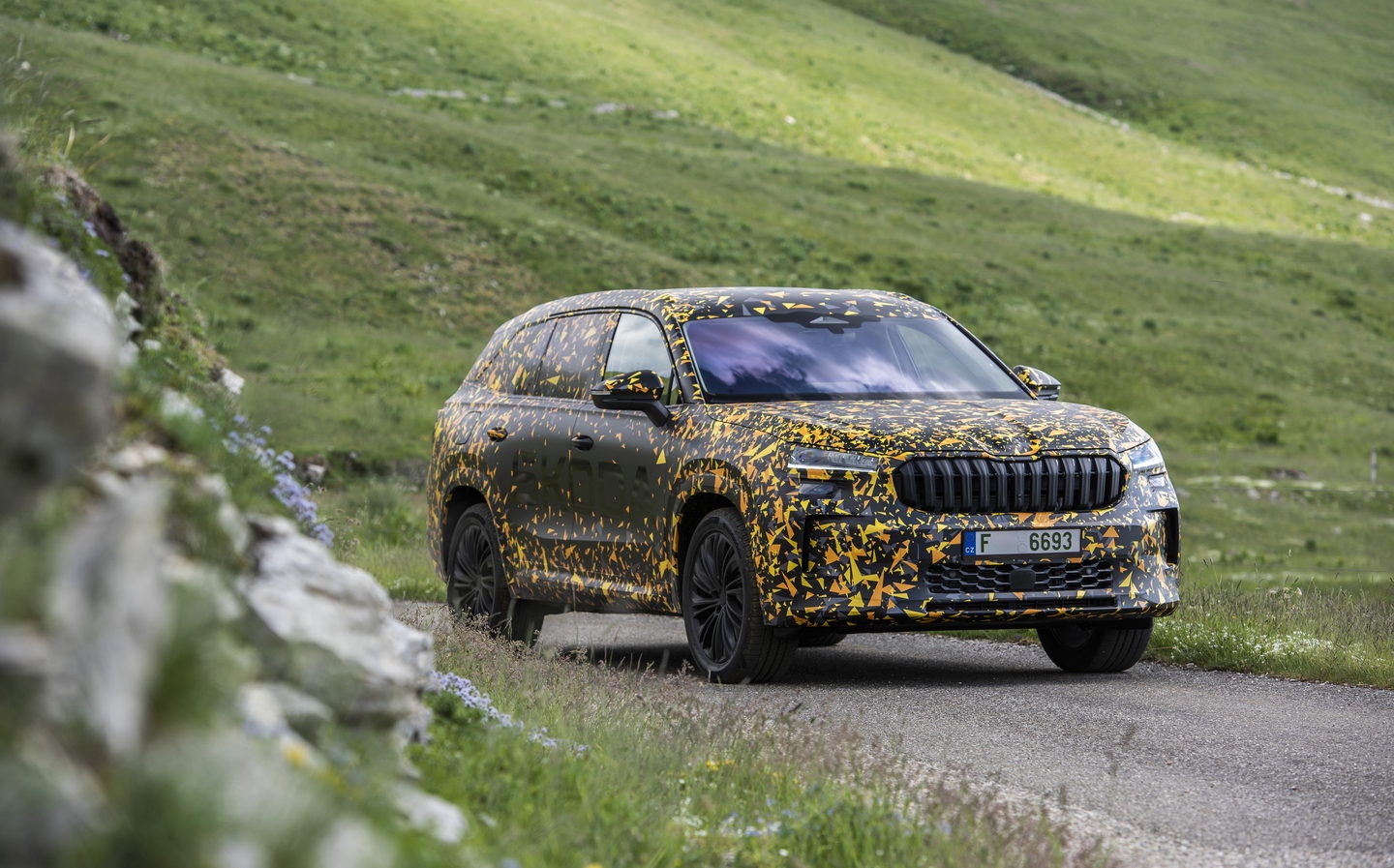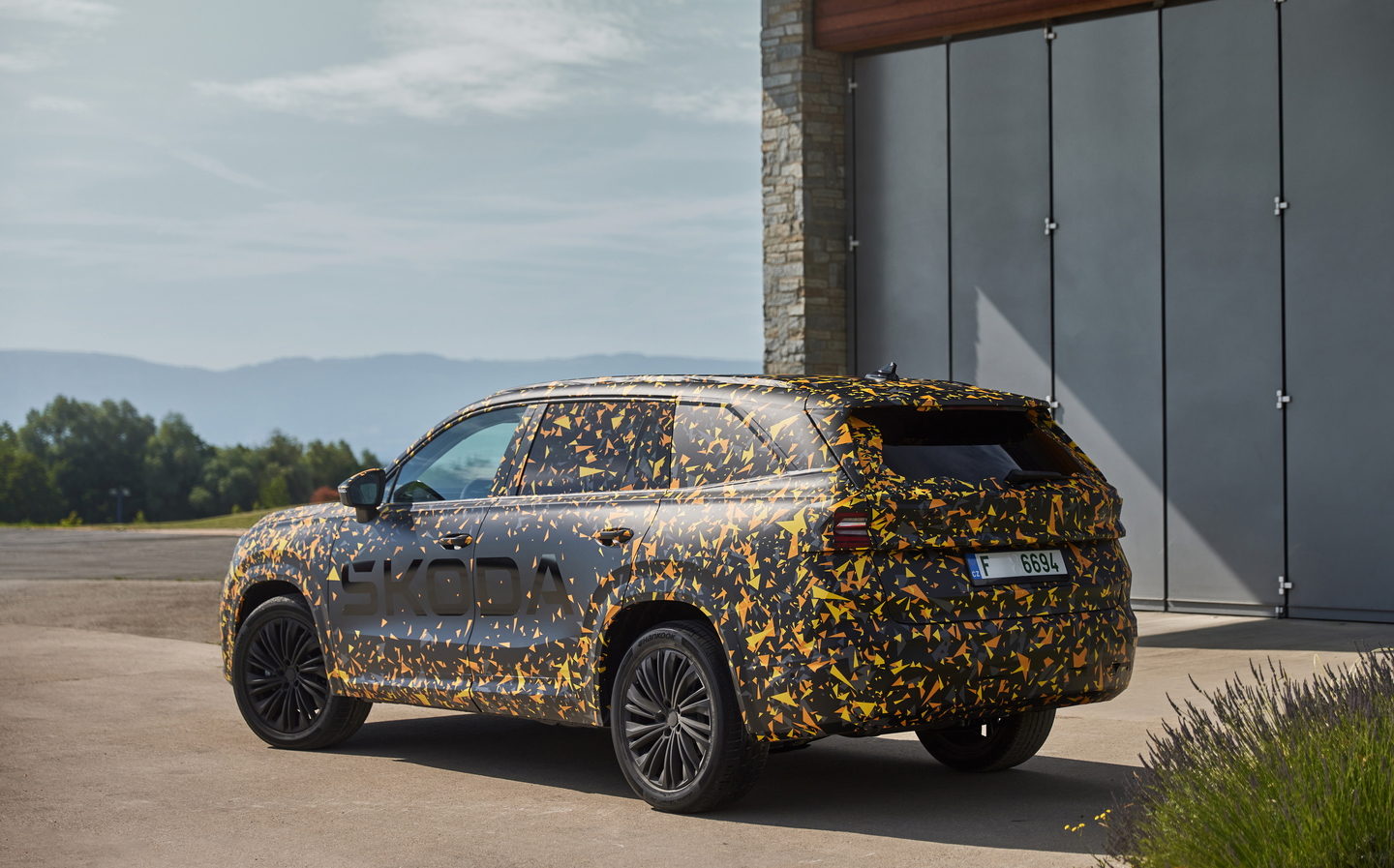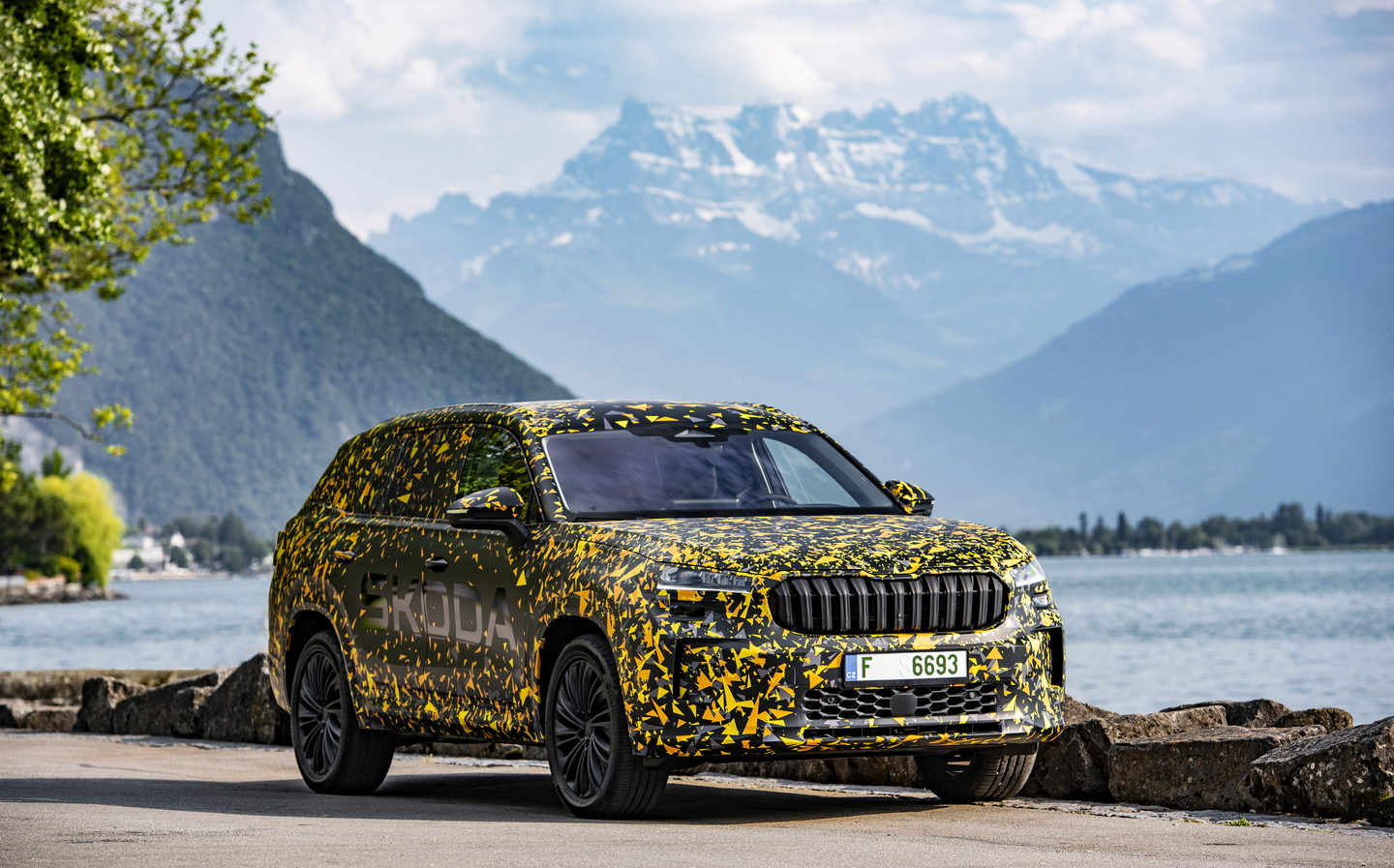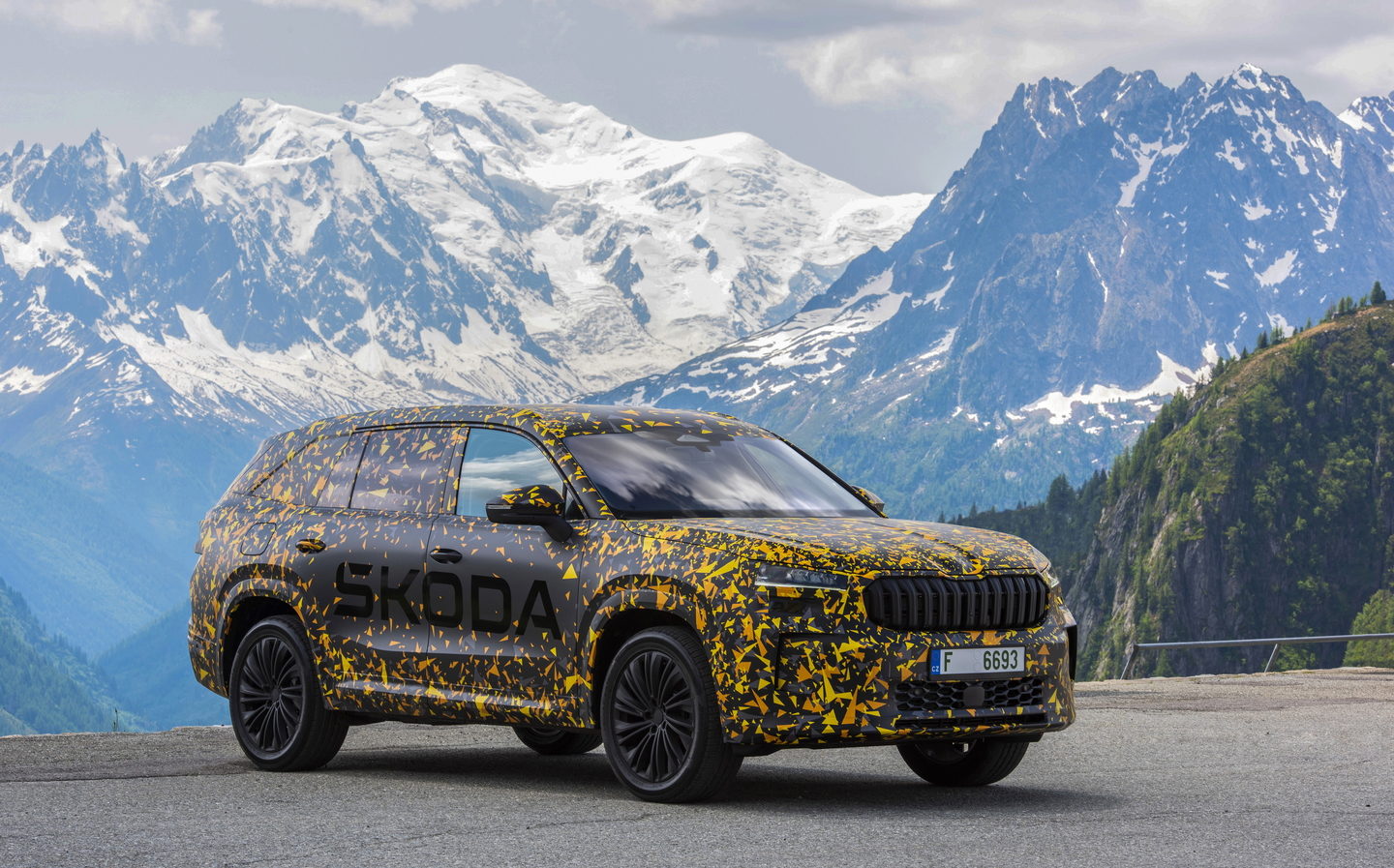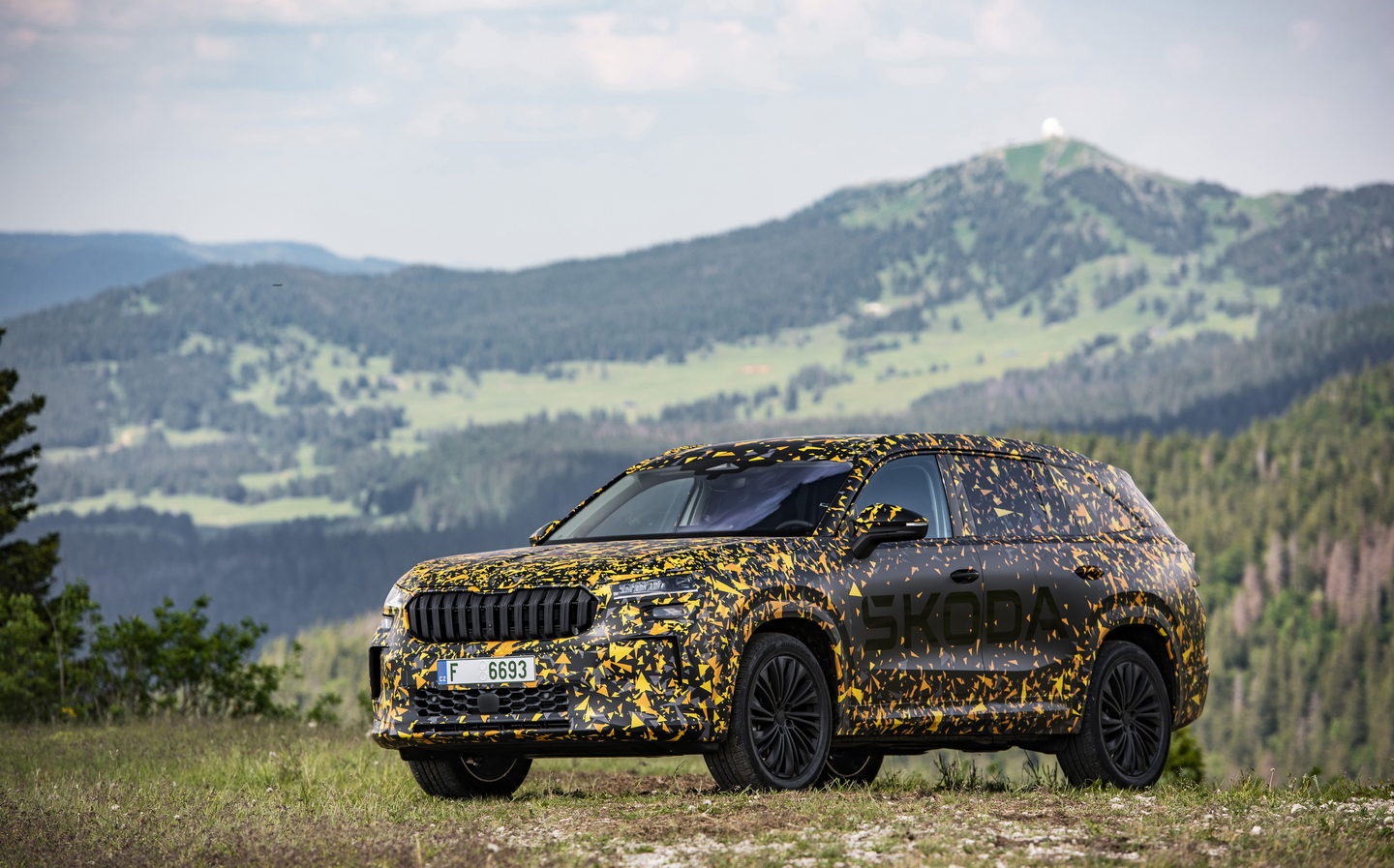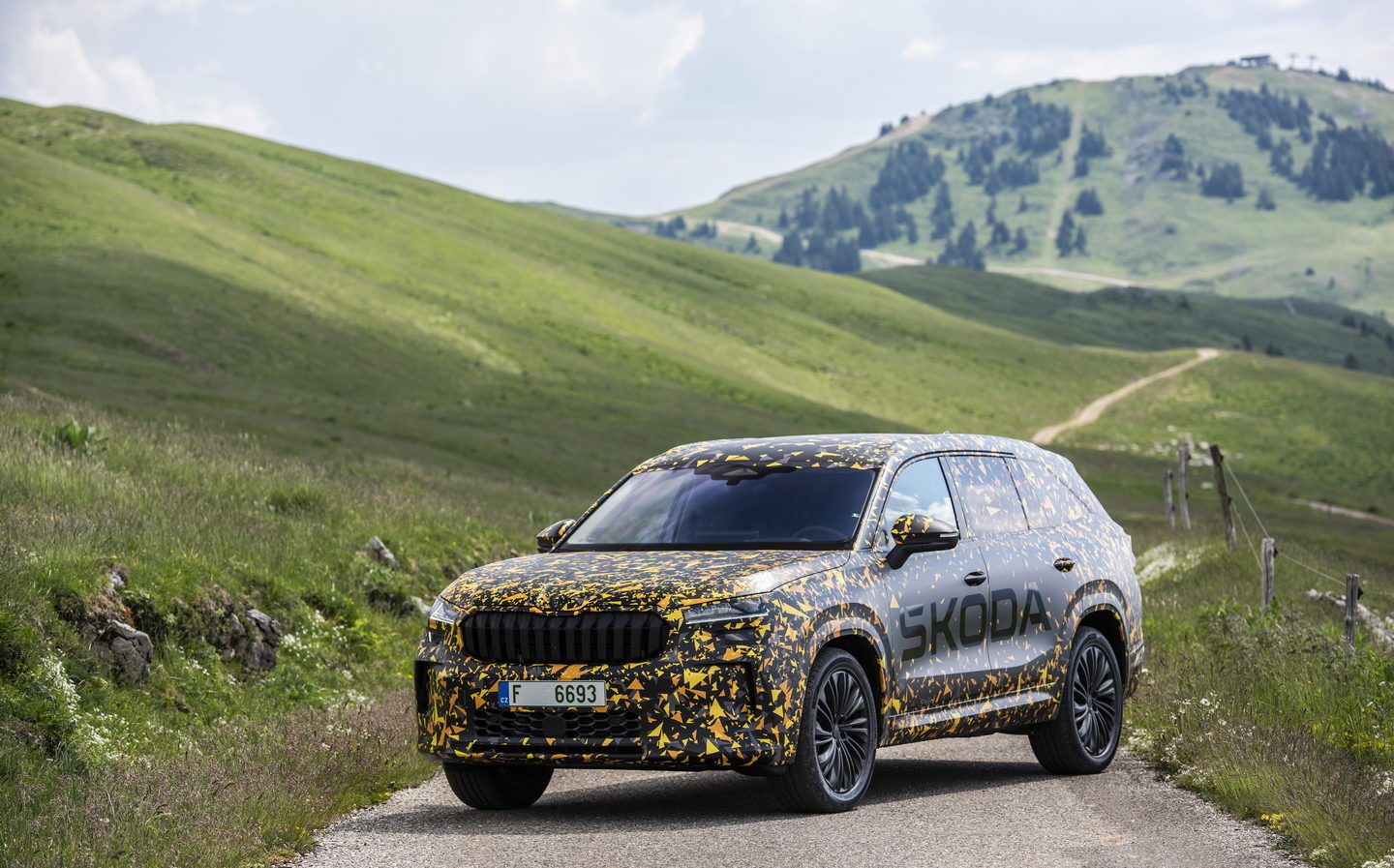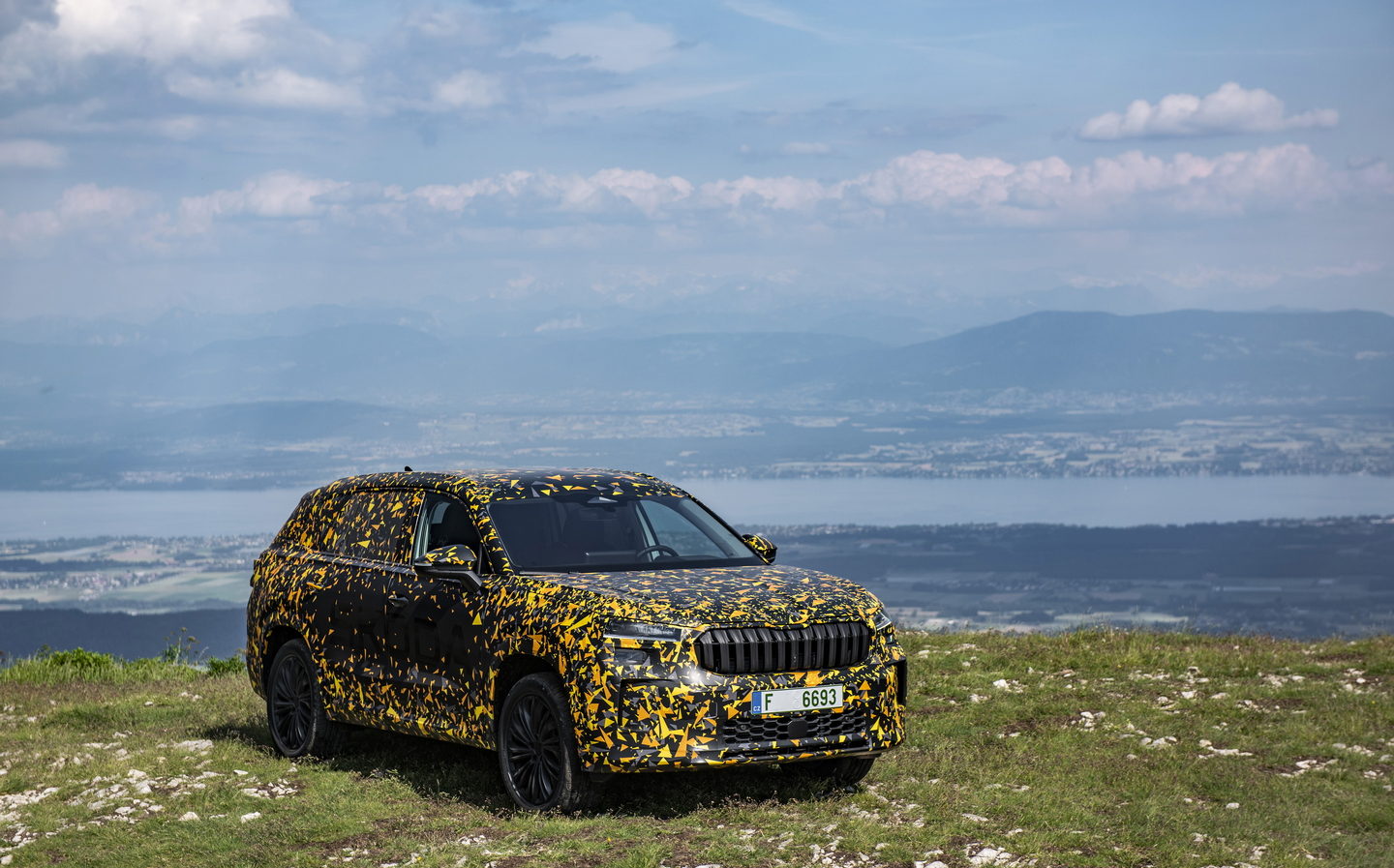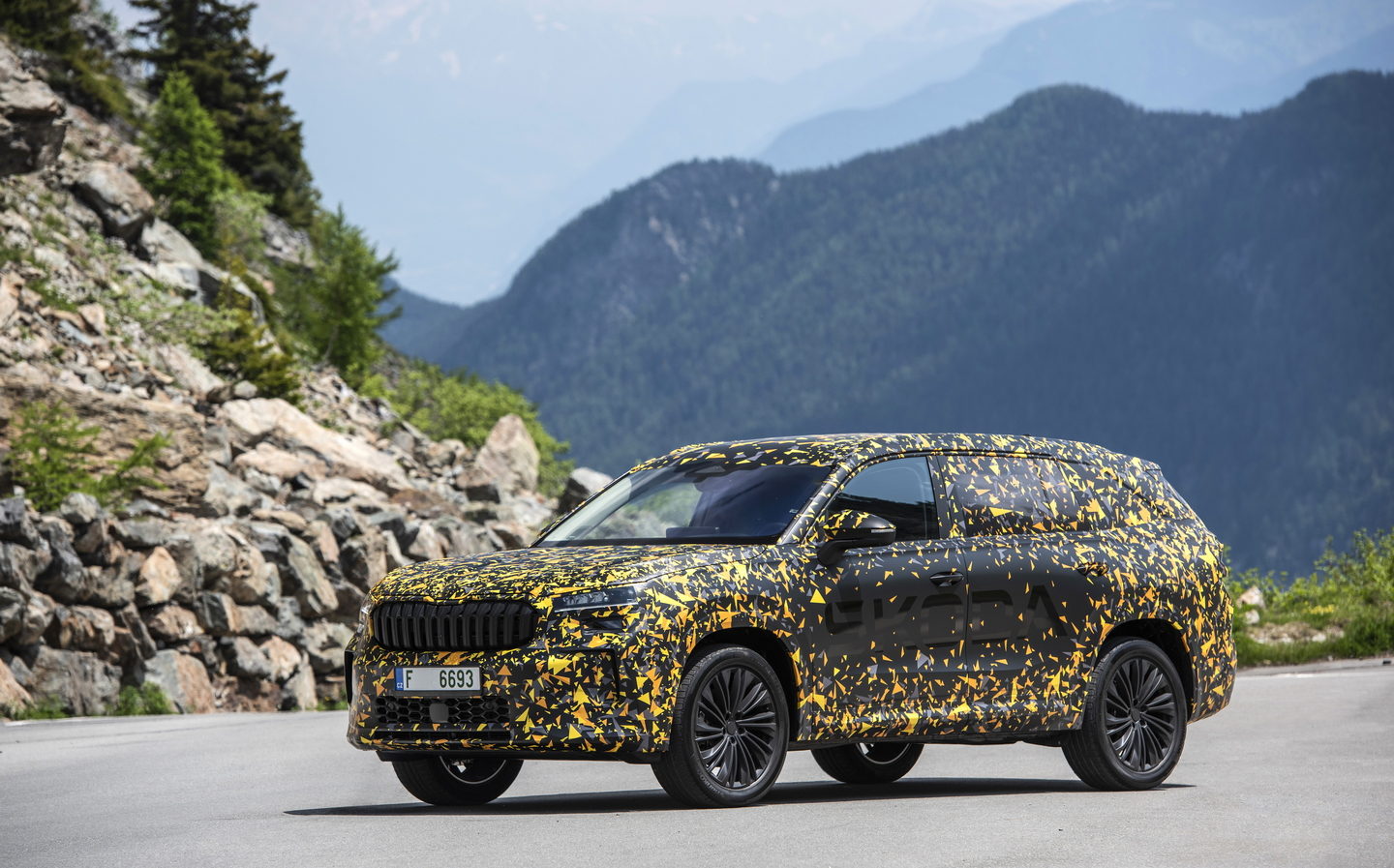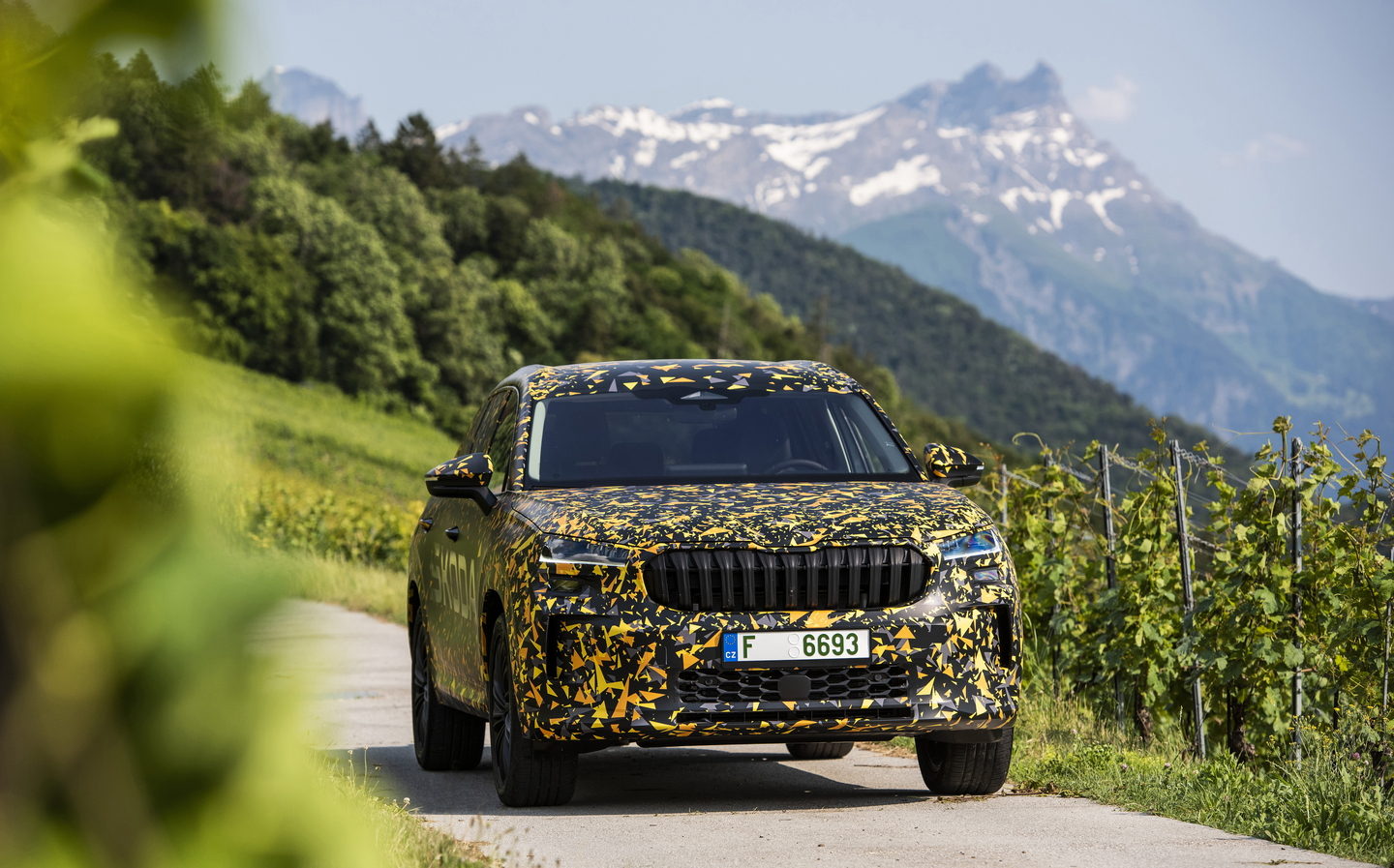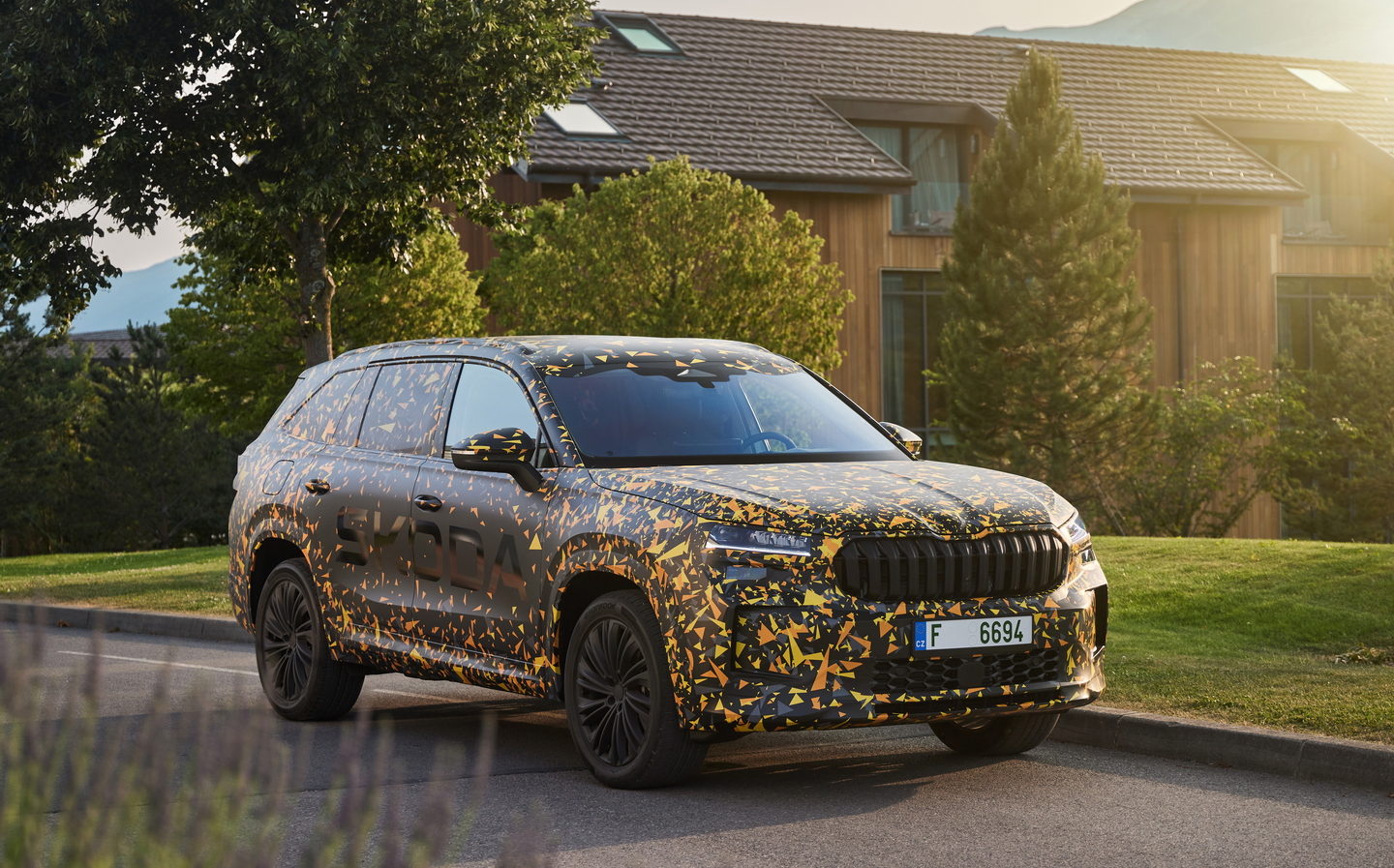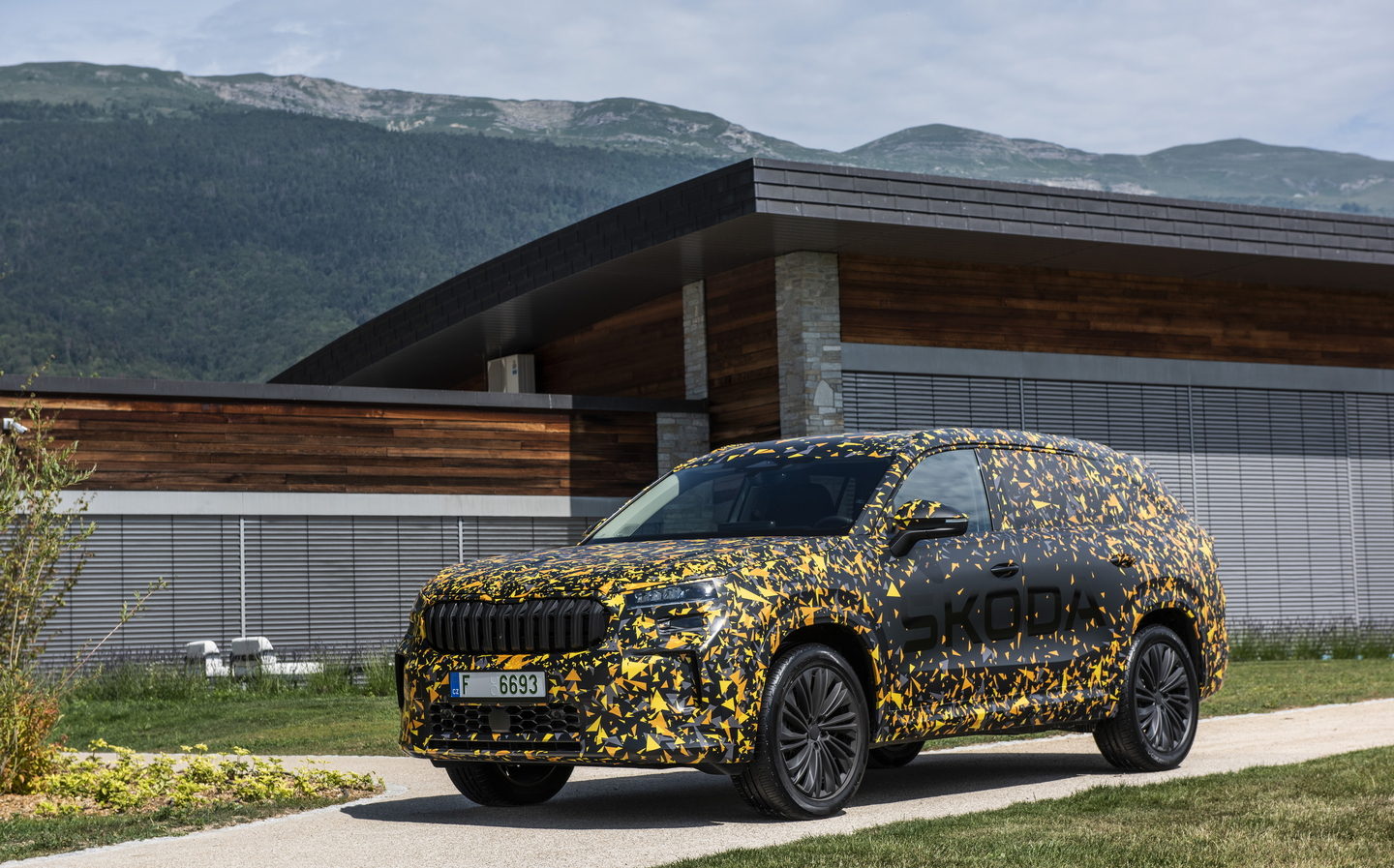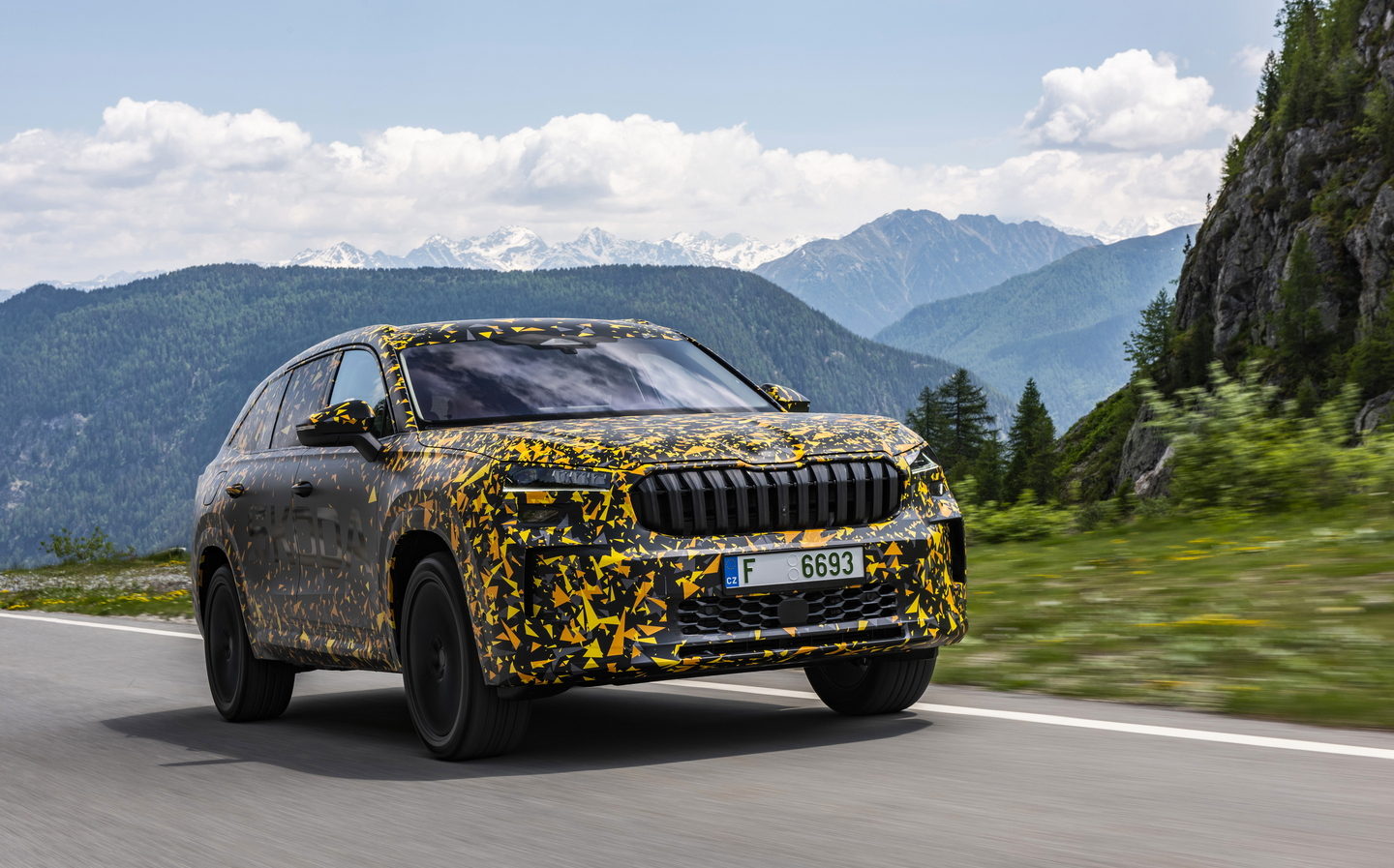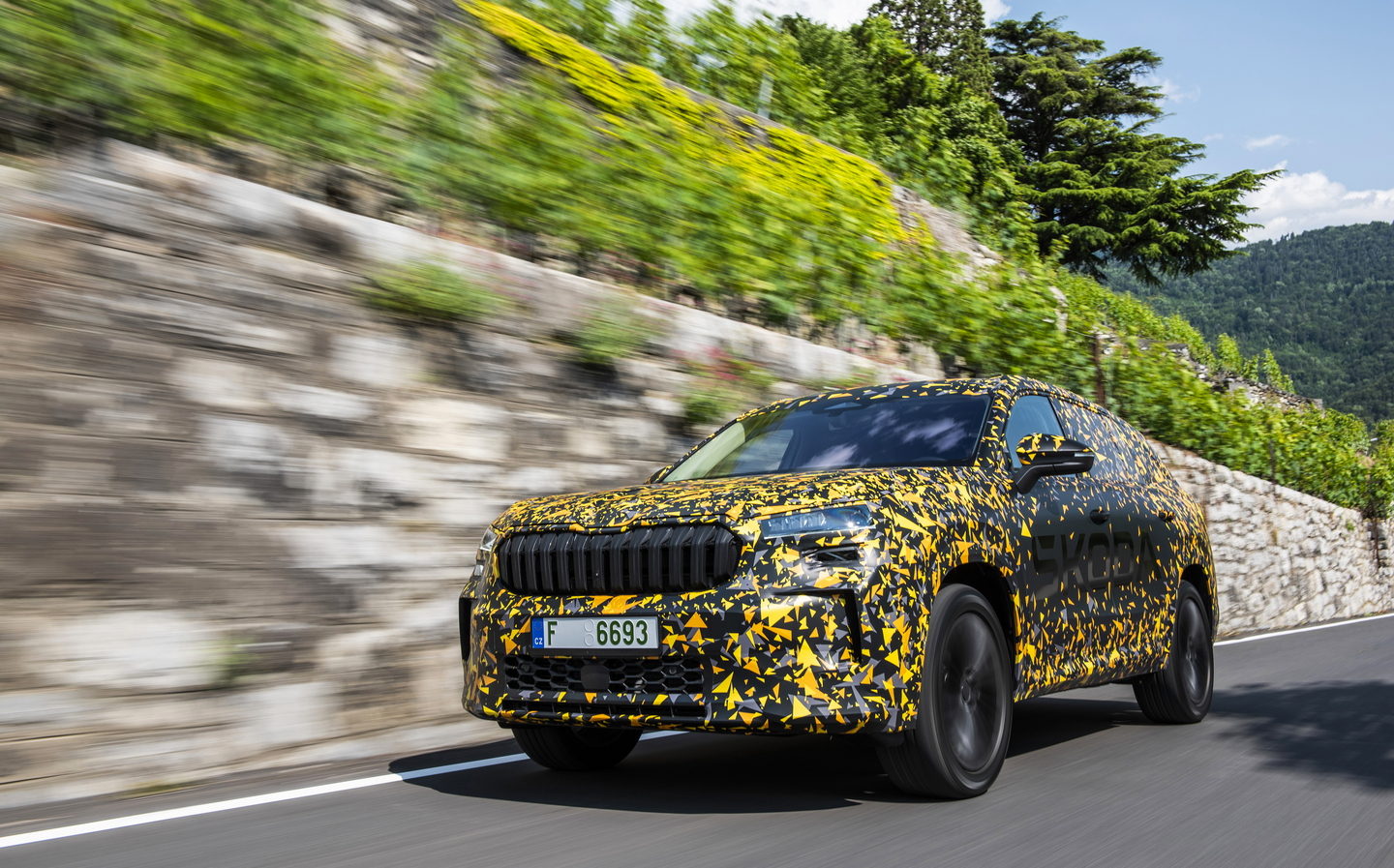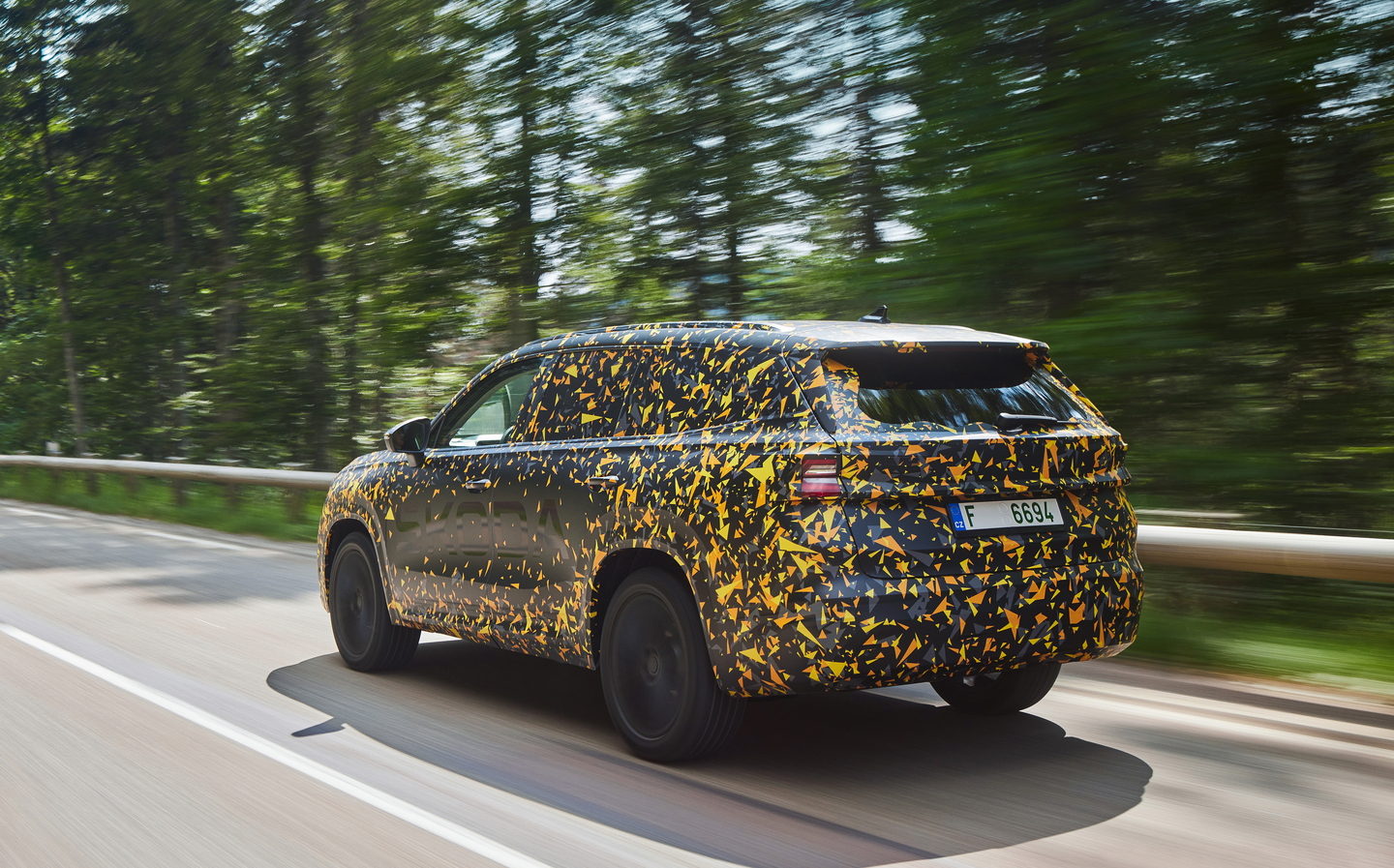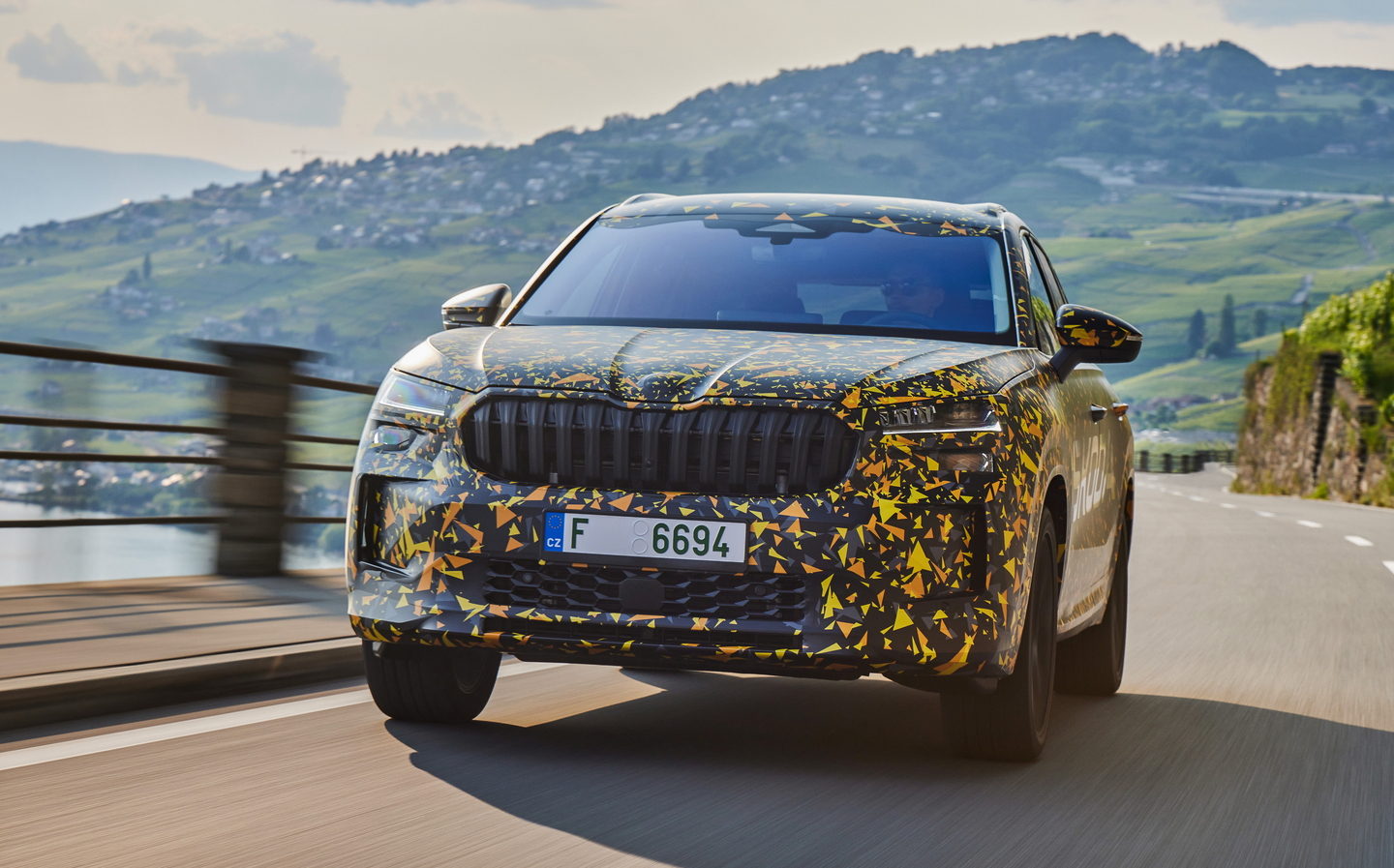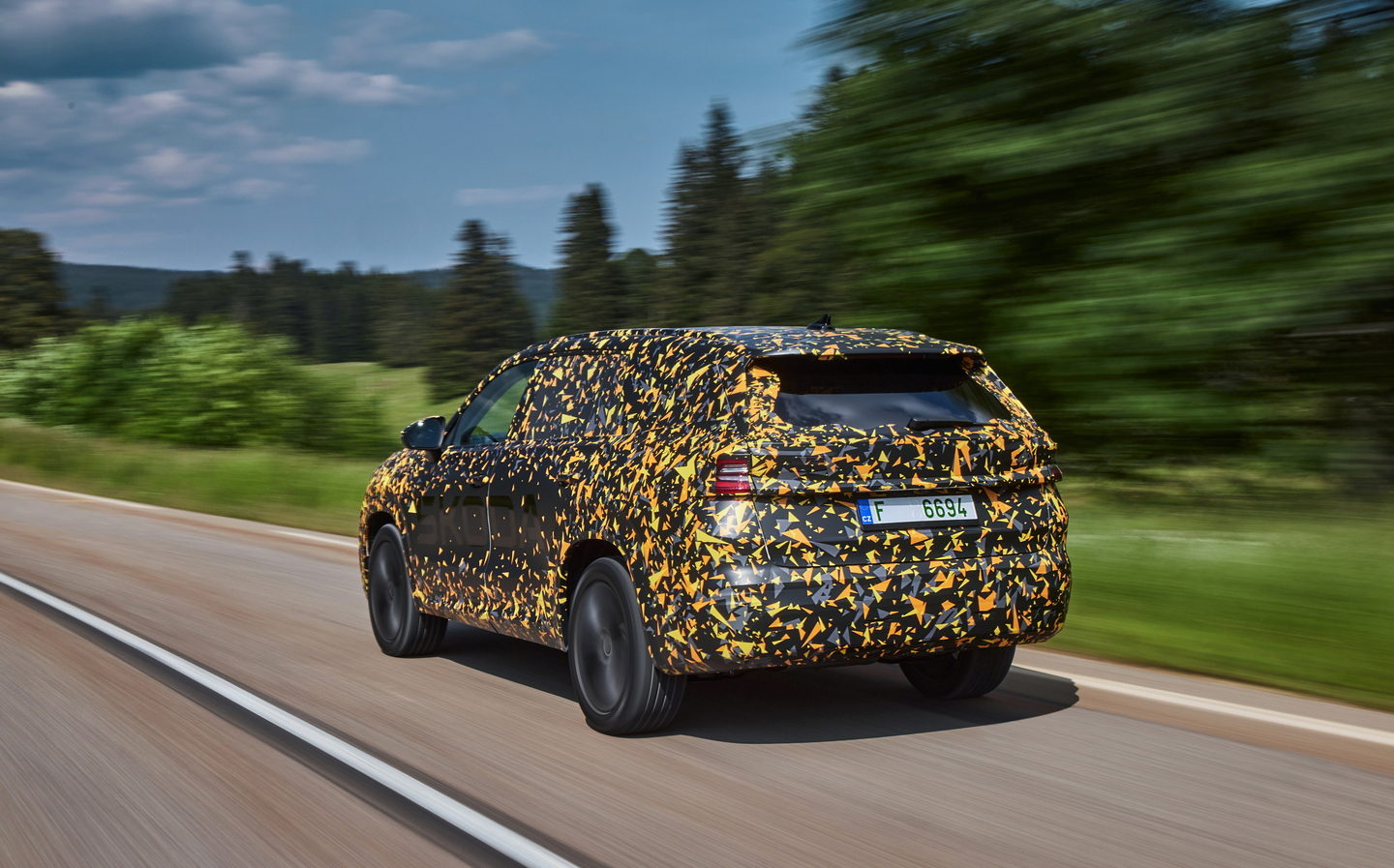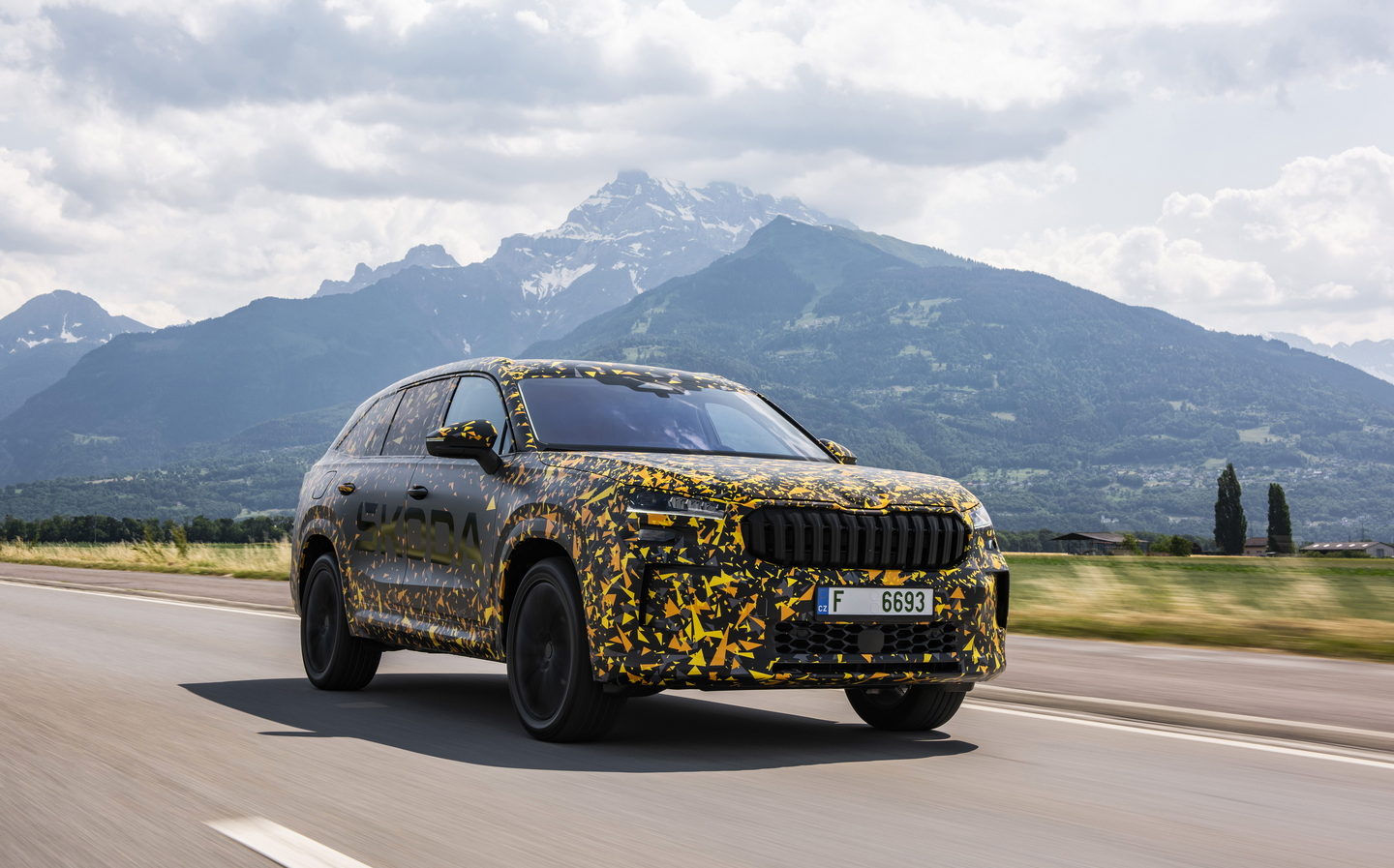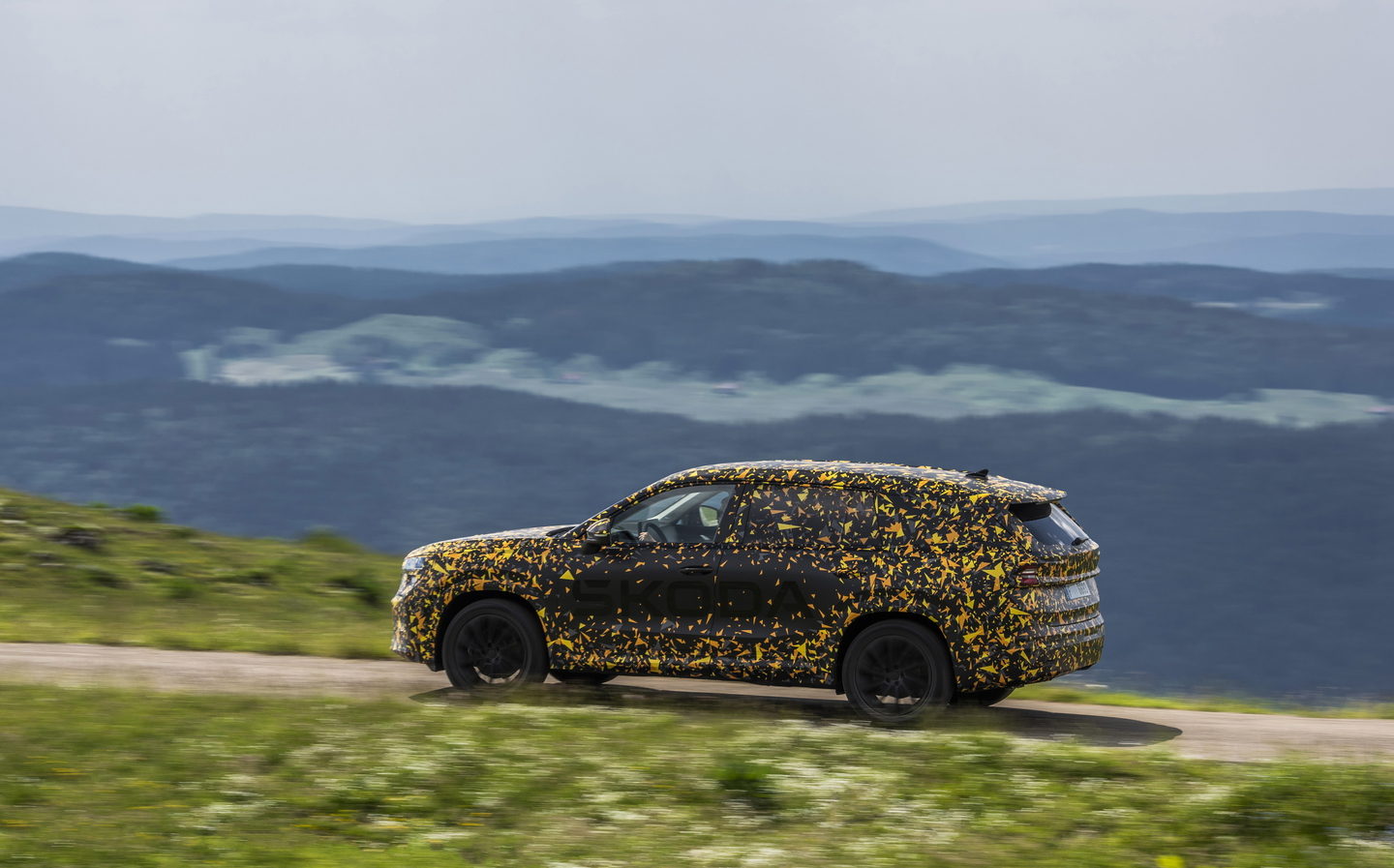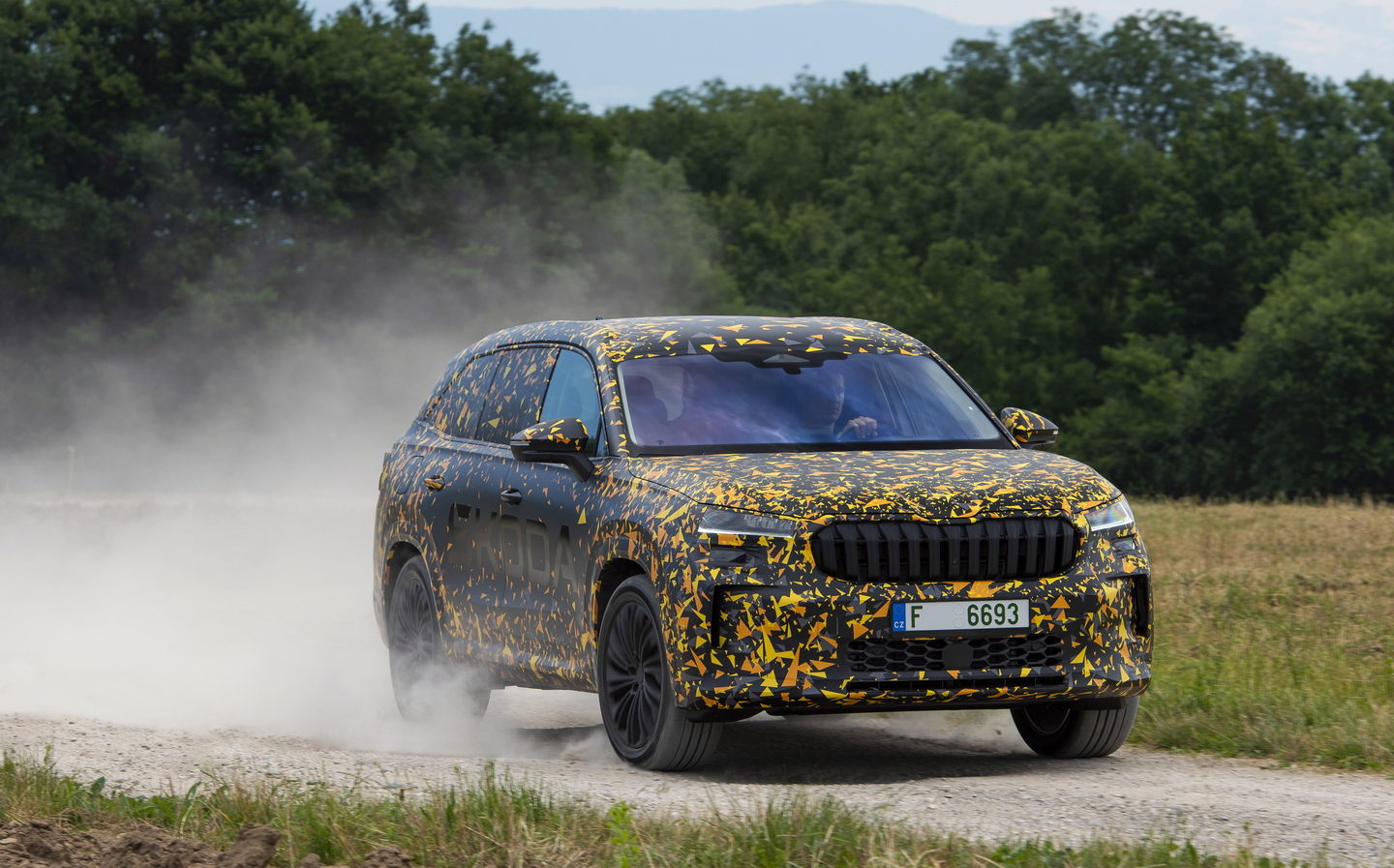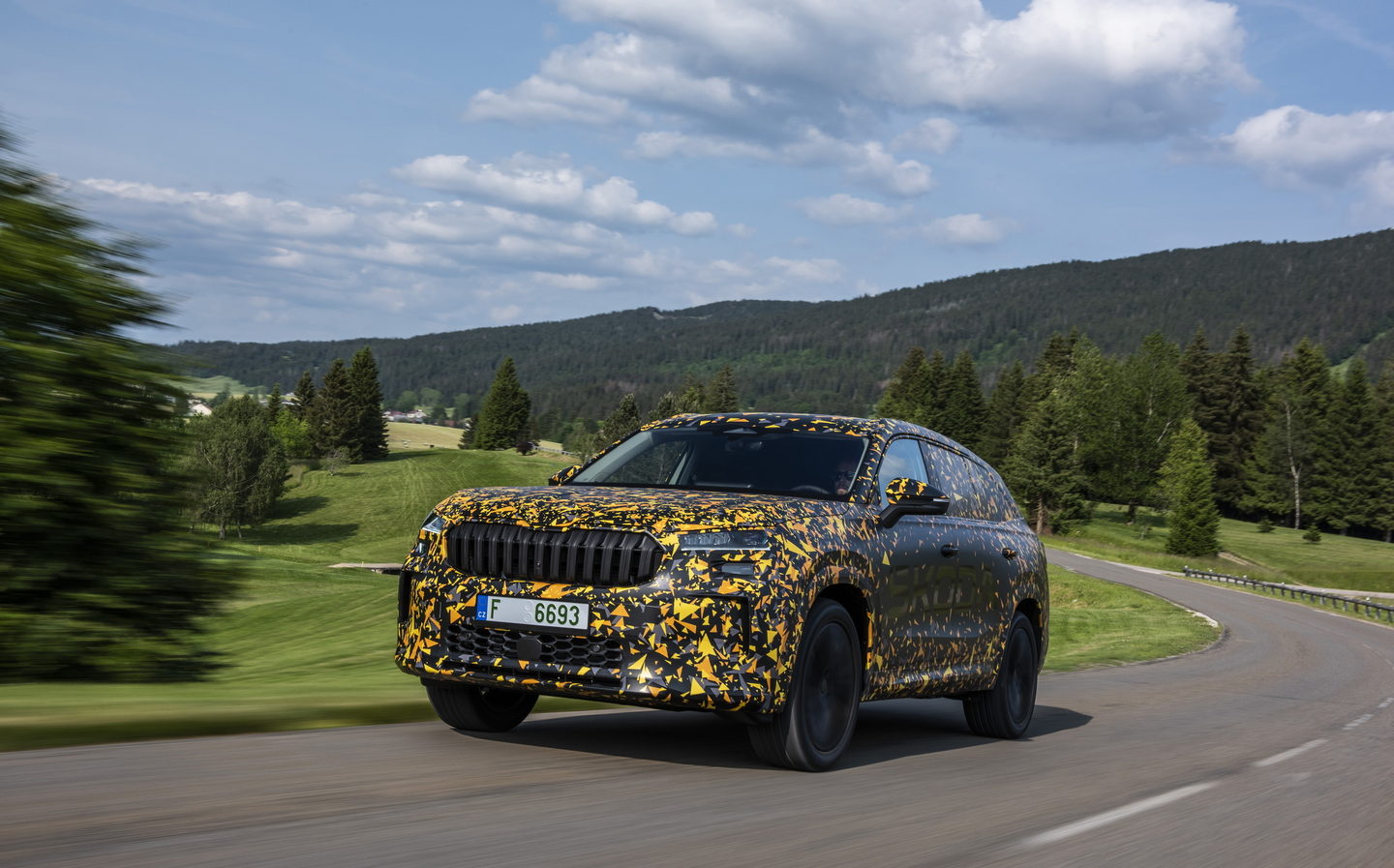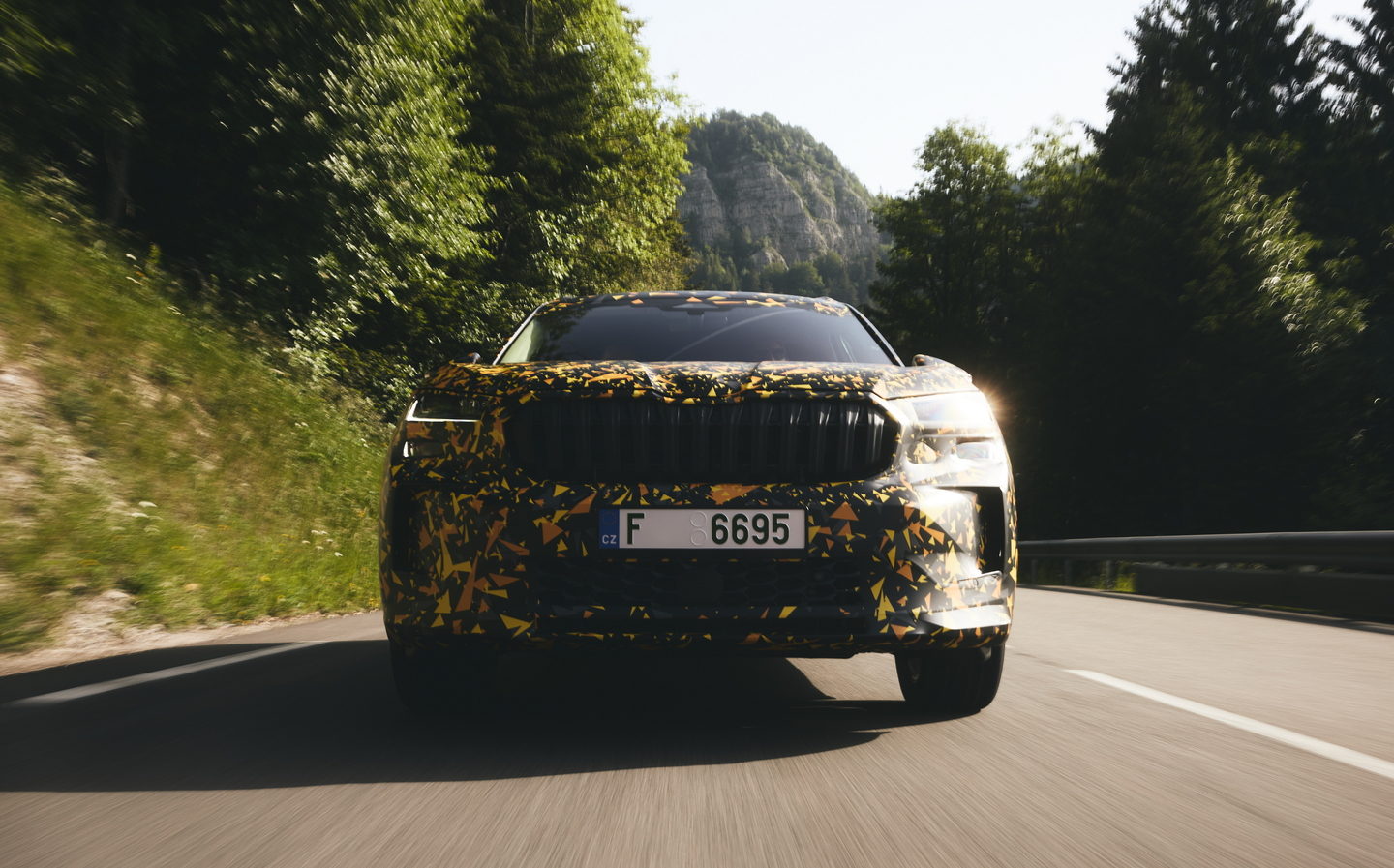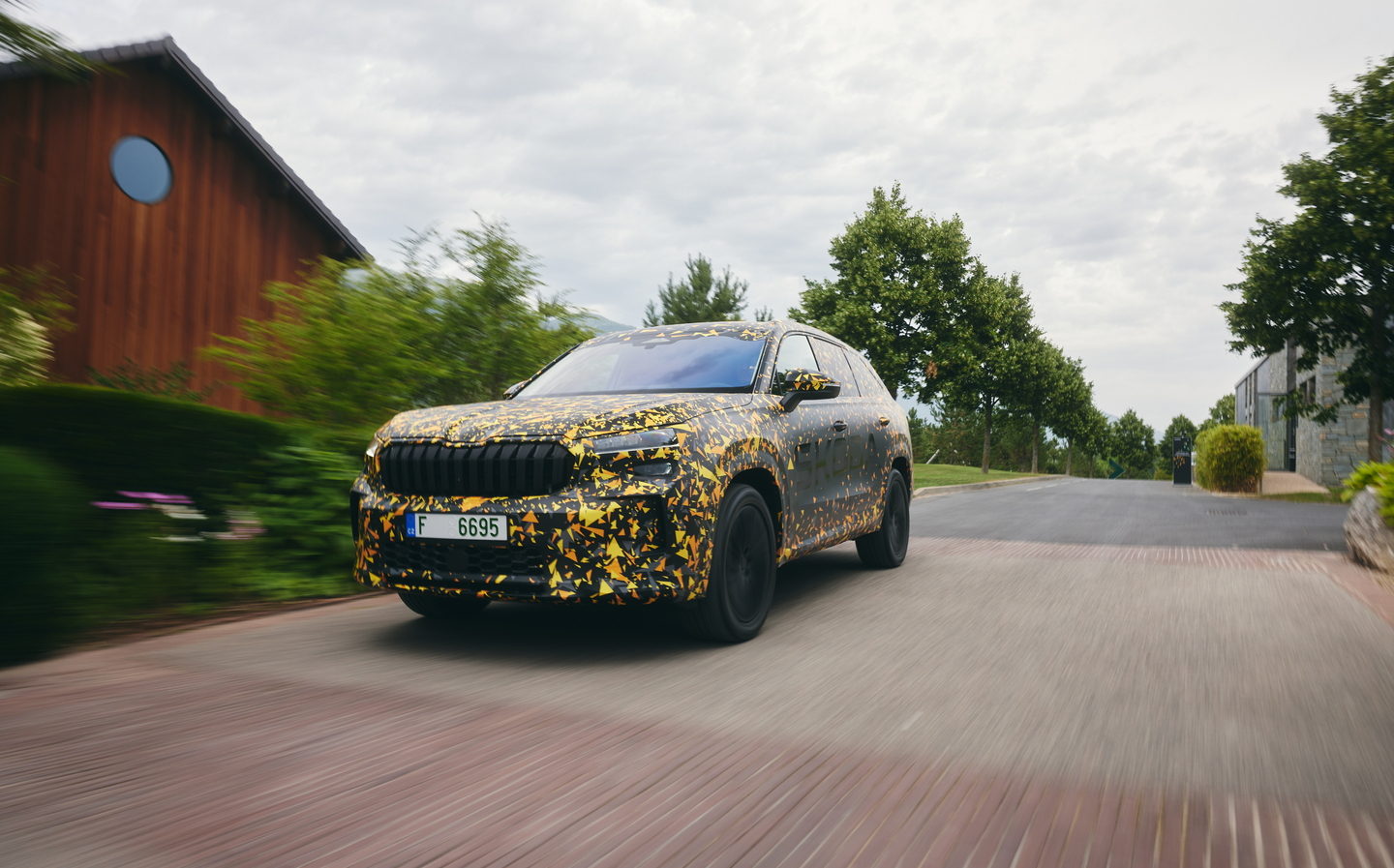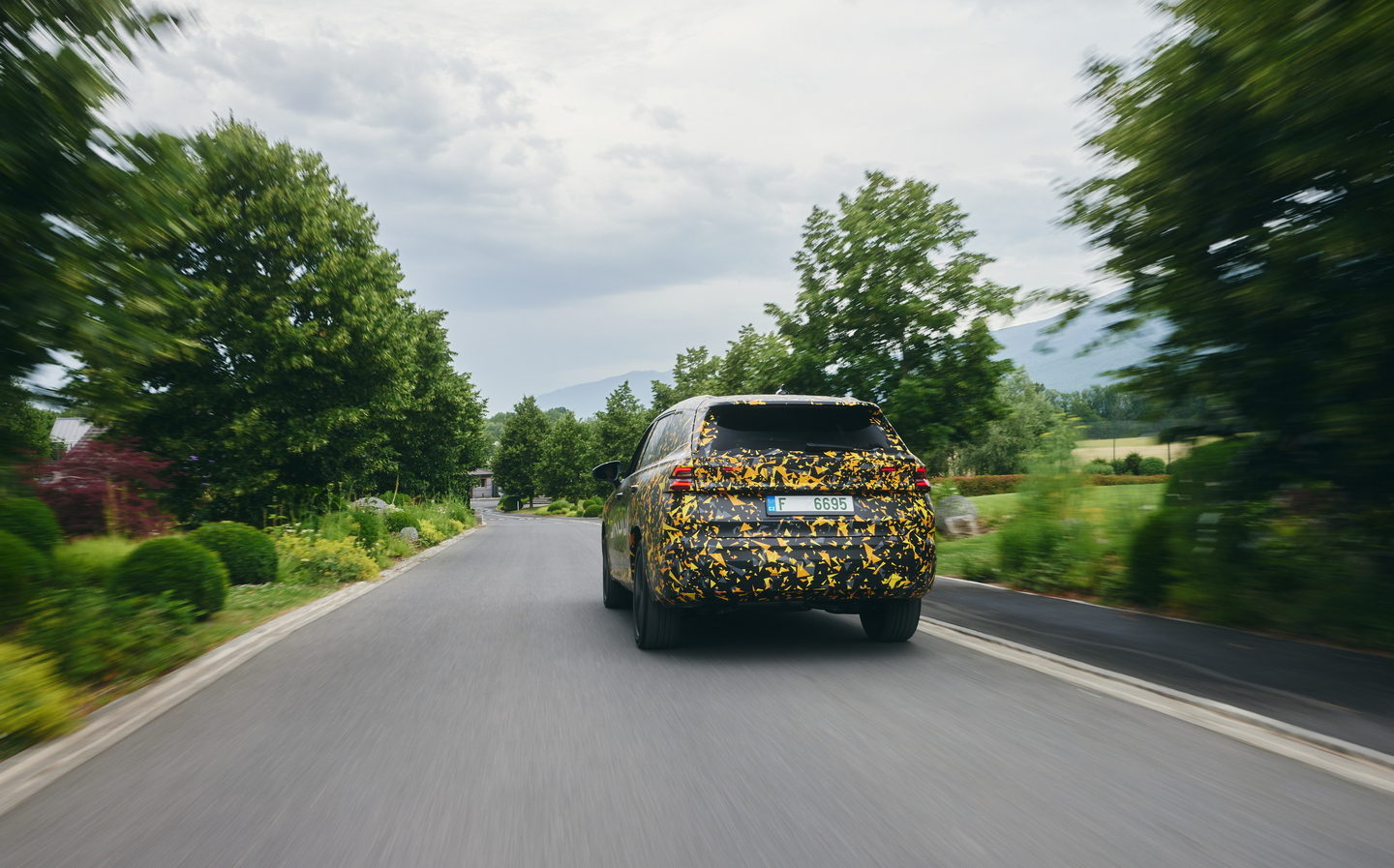Skoda Kodiaq 2024 prototype review: Extra interior space and new plug-in hybrid option for family SUV
Nothing grizzly about this Kodiaq
-
Handling
-
Comfort
-
Performance
-
Design
-
Interior
-
Practicality
-
Costs
- Variant: 2.0 TDI
- Price: TBA
- Engine: 1,984cc, four-cylinder diesel engine
- Power: 190bhp
- Transmission: Seven-speed (automatic), all-wheel drive
- Acceleration: TBC
- Top Speed: TBC
- Fuel: TBC
- co2: TBC
- Road tax band: TBC
- Dimensions: 4,758mm x 1,864mm x 1,657mm
- Release Date: Available to order from October
Skoda’s presence in the SUV market can be tentatively traced back to the 2009 Yeti, a car that began breaking down genre barriers and has since become a cult classic among enthusiasts. But it was the arrival of the Kodiaq in 2016 that truly kick-started Skoda’s SUV range.
Later this year Skoda will introduce the second generation of Kodiaq, built as an evolution of the original with further hybrid and electric options alongside a boost in interior technology. We were given the chance to try out one of the final engineering prototypes.
Exterior design and rivals
It’s not easy to make out the exterior design detail of the next Kodiaq because of the camouflage, and Skoda is keen to keep it under wraps until the car’s official reveal in early October. What is clear is that Skoda’s designers haven’t veered far from the overall look of the first generation. After all, it has notched up nearly 800,000 sales to date, and the UK is the second biggest market for the Kodiaq, after Germany.
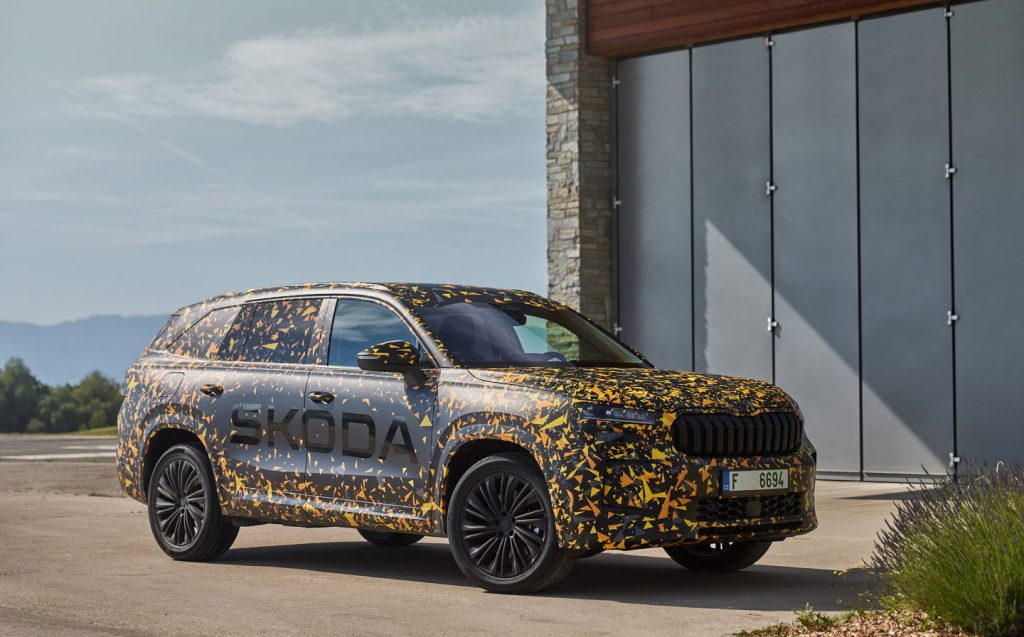
An evolutionary design will ensure that the new car remains easily identifiable as a Skoda Kodiaq but it should look more modern. This approach will include details within the headlights called ‘Crystallinium’ — similar to the green hue you sometimes see in crystal. The front of the new Kodiaq is also expected to feature a more distinctive daytime running light signature.
The size of the Kodiaq isn’t changing much, primarily as it uses the same core underpinnings of the model it replaces, albeit with updates. The overall length increases by 61mm, though much of that is down to the bumper designs, as the wheelbase (the distance between the front and rear wheels) is only 1mm longer than before. There is a minor (18mm) reduction in width, while the roof of the new car is 3mm lower. Buyers will have a choice of wheel sizes ranging from 17 to 20 inches depending on specification.
Skoda will have plenty of solid competition for the next Kodiaq, expected to be offered in five- and seven-seat guises. Rivals include the Hyundai Santa Fe, Kia Sorento, Nissan X-Trail and, closer to home, the Volkswagen Tiguan, which is also about to be replaced by a new model.
Interior and practicality
Nobody does practicality quite like Skoda, but rather than rest on its laurels the firm’s engineers have come up with new features, including some that are a little more environmentally friendly. For example, that famous ice scraper held in the fuel filler flap? Now it’s made entirely from recycled plastic.
A decision to offer the Kodiaq only with automatic gearboxes has allowed the designers to move the drive selector onto the steering column, which now operates via shift-by-wire. Indeed, it’s the same as that used in the electric Volkswagen ID. Buzz and is very easy to use. That frees up space between the front seats and helps to add more than two litres of additional storage, according to Skoda.
A new dashboard layout also provides space for a large 12.9in touchscreen to operate an improved infotainment system. However, Skoda isn’t ditching buttons entirely. Instead, it combines physical controls with digital displays. Three rotary dials at the base of the centre console control different functions, such as cabin temperature, and contain small digital colour displays within each dial — not entirely differently to how it is done in the latest Range Rover. A central control also has a multifunction setup that alters the display according to operation.
There is a new seat design that has a good level of side support without feeling like a racing bucket seat. Skoda is adding a massage function, too. The roof design means a 15mm increase in headroom for those sitting in the third row of seats; it’s not a big difference, but every bit helps.
Luggage capacity remains one of the Kodiaq’s strong points, and five-seat versions will accommodate 910 litres. For the seven-seater, 345 litres of cargo capacity is available with all seats in use, which is around the same as what you’d typically get in a mid-sized hatchback.
Technology and safety
Helping drivers to see more at night is the second-generation version of Skoda’s matrix headlights. With 50 per cent more lighting segments, the system can provide a claimed 15 percent improvement in illumination.
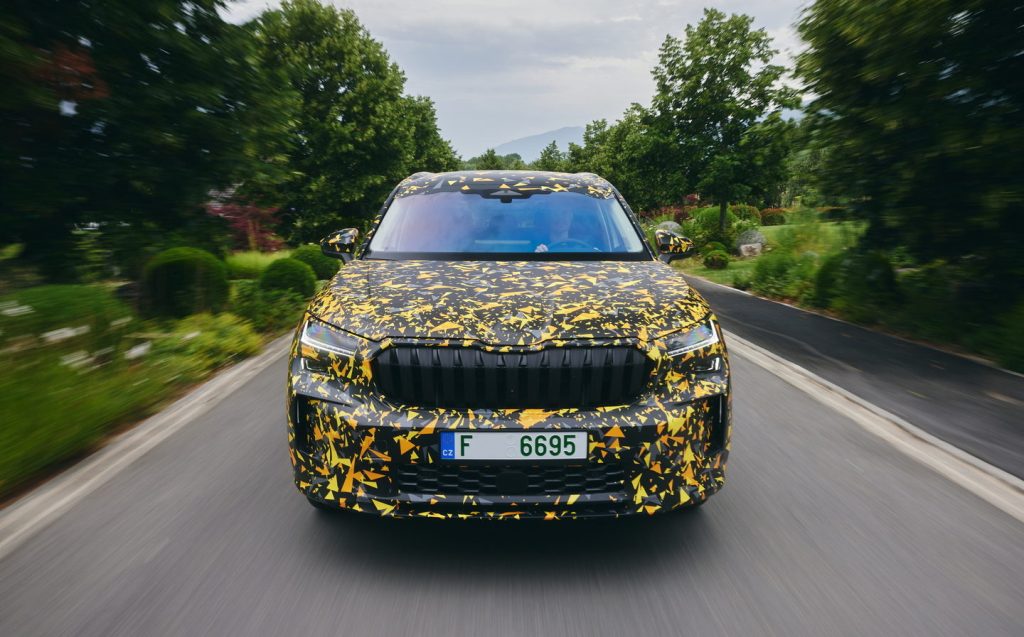
Ahead of the driver is a 10.25in digital instrument display, which has quickly become the norm in new cars. Drivers can choose from different layouts of the dials, and there will be the option of an improved colour head-up display, too.
With more people preferring to use their devices for entertainment, Skoda will offer wireless smartphone mirroring for Android and Apple devices. Furthermore, Skoda is upgrading its wireless charging capability with a new 15-watt unit that can charge two phones simultaneously and has active cooling to prevent your phone’s battery from overheating.
For added convenience — or to show off to your neighbours — the Kodiaq will be available with a new remote parking assist function that can be controlled via a smartphone app. Up to five metres from the car, owners can remotely start the engine and have the vehicle move in or out of a parking space. It will sound like a gimmick to some but could prove helpful the next time someone parks needlessly close to your car, preventing you from opening the door.
The system can also detect any pedestrians or objects that might not have been seen and will stop the car automatically.
Performance, power output and acceleration
When the Kodiaq goes on sale it will be available with a broader choice of engines than before, with three petrol and two diesel options — though which will make it to the UK has yet to be confirmed. The 1.5-litre petrol engine will be equipped with mild-hybrid technology to slightly improve fuel economy and reduce emissions. That produces up to 148bhp, while a 2-litre petrol unit (without hybrid tech) has a 201bhp output.
Of bigger news for the Kodiaq is the arrival of a plug-in hybrid version for the first time. That will use a 26kWh battery to provide an official electric driving range of more than 62 miles, but we’ll have to wait until after the car’s launch to tell you what it’s like to drive.
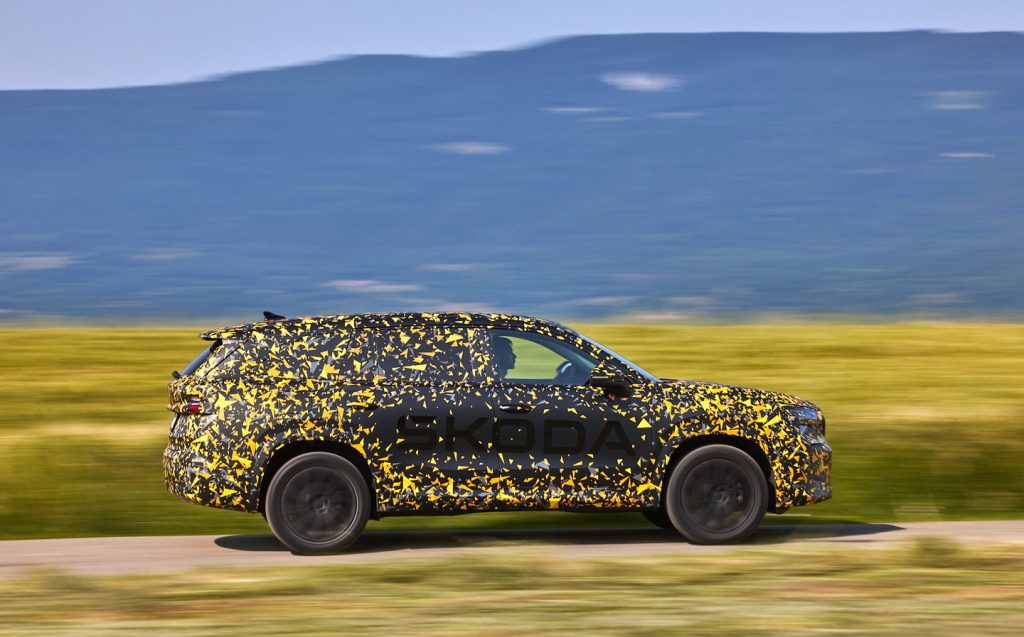
Our first early taste of the Kodiaq is in the more powerful of the two diesel engines available. The 2-litre turbocharged four-cylinder unit produces 190bhp and is an evolution of an existing engine with improved thermal management for better efficiency. This engine is paired with four-wheel drive by default, which can be especially beneficial if you do a lot of towing. The 148bhp version of the 2-litre diesel drives only the front wheels.
Performance figures have yet to be announced, but we can tell you that the 190bhp variant feels more than brisk for a car of this size and yet the diesel engine is commendably muted.
The seven-speed automatic gearbox provides a more engaging driving experience when shifted into its Sport mode, unsurprisingly, but it’s unclear if there will be a new diesel vRS version of the next Kodiaq.
Ride and handling
Drivers of the new Kodiaq will have more confidence in the front end thanks to a re-engineered front axle, making the nose feel as if it’s turning into a corner more precisely than before. The steering is well-weighted and the Kodiaq feels planted and composed at higher speeds on the motorway. We wouldn’t say that the ride is firm; there’s still plenty of comfort there, but when you want to pick up the pace through a sequence of bends, the Skoda manages its mass capably.
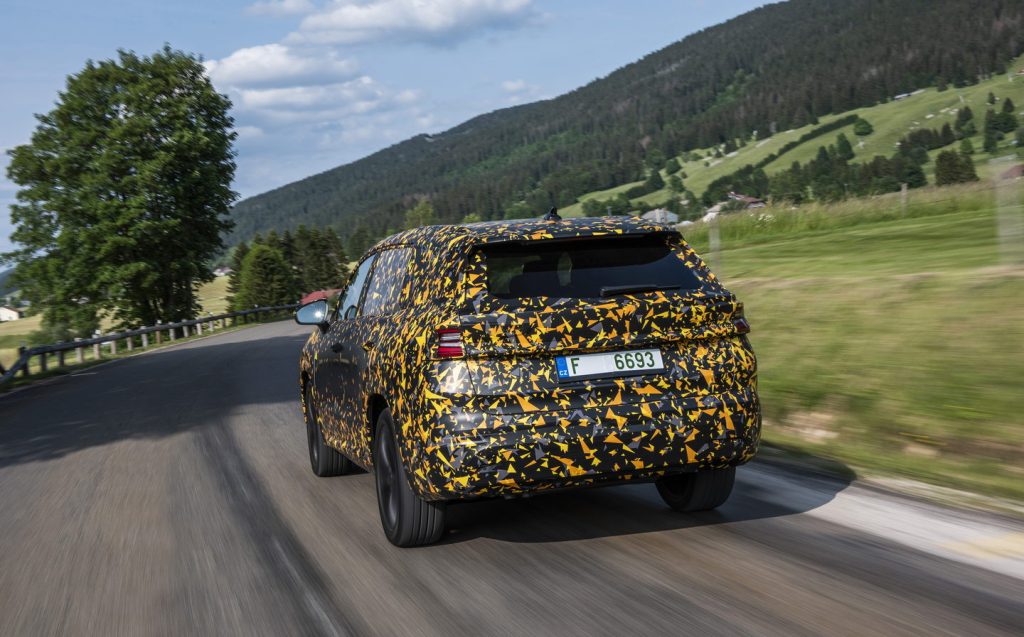
In this early drive, it wasn’t possible to experiment with the different drive modes available, but we expect they’ll do the usual, with an economy-focused setting dulling response at one end and a more dynamic option for quicker acceleration. Skoda will introduce an enhanced version of its adaptive chassis control system that can alter the suspension feel at the touch of a button.
That being said, the Kodiaq is very much aimed as a do-everything family car, so it’s still incredibly good at the more practical things, such as being easy to park and less taxing to drive over long journeys. It’s certainly comfortable enough for a fully-loaded family holiday to France or Scotland.
Pricing and on-sale date
There won’t be any official pricing for the Skoda Kodiaq until the car is fully revealed later this year, and deliveries are unlikely before the first quarter in 2024. We do expect the price to increase slightly over the outgoing model.
Skoda plans to introduce a clearer and streamlined product line, with options grouped together into packages.
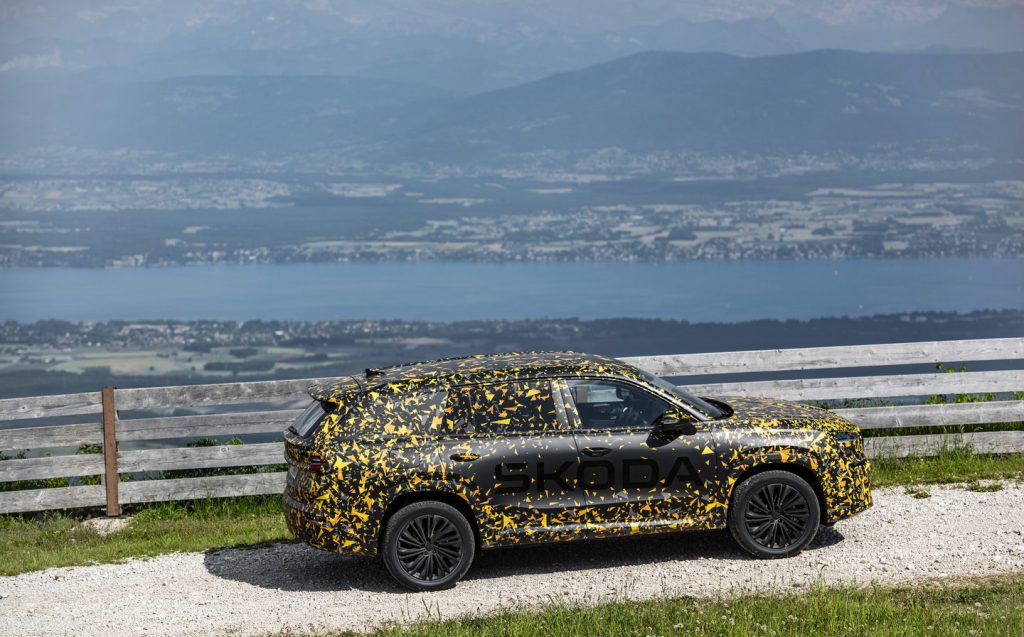
Verdict: Skoda Kodiaq review
With the first Kodiaq proving to be such a success story Skoda was unlikely to mess with the recipe too much, and this early taste of the next model confirms that. We’re glad that the Kodiaq hasn’t grown much, and the interior seems to be where the major changes come.
We’ll have to wait until the car’s launch to see how the plug-in hybrid version stacks up, but in a packed market it seems the next Skoda Kodiaq should still be able to hold its own against some excellent competition.
Related articles
- After reading this review of the 2024 Skoda Kodiaq, you might want to read about the fully electric Skoda Enyaq iV vRS
- Keen to go electric? Here are the top 10 longest-range electric cars
- If you think Kodiaq is an unusual name, have a read of the most ridiculous car names ever
Latest articles
- Bedeo Defender 110 2024 review: Does electric Landie with in-wheel motors make for a perfect off-roader?
- F1 2024 calendar and race reports: What time the next grand prix starts and what happened in the previous rounds
- BYD Seal U 2024 review: Chinese brand adds plug-in hybrid SUV to its electrified line-up
- New Mini John Cooper Works revs up for Nürburgring 24-hour race debut
- Ineos Grenadier Quartermaster 2024 review: British pick-up is a tough mudder but too flawed to be a real workhorse
- Mini Cooper SE 2024 review: All-new electric hatchback is playing to the crowd
- Jeep Wrangler 2024 review: Impressive off road but you’d still have to be a committed contrarian to buy one
- Around 500 Ford workers in UK could go on strike over cost-of-living pay dispute
- Durham solar car team to take part in 24-hour race with smart tyres and night-driving solution




